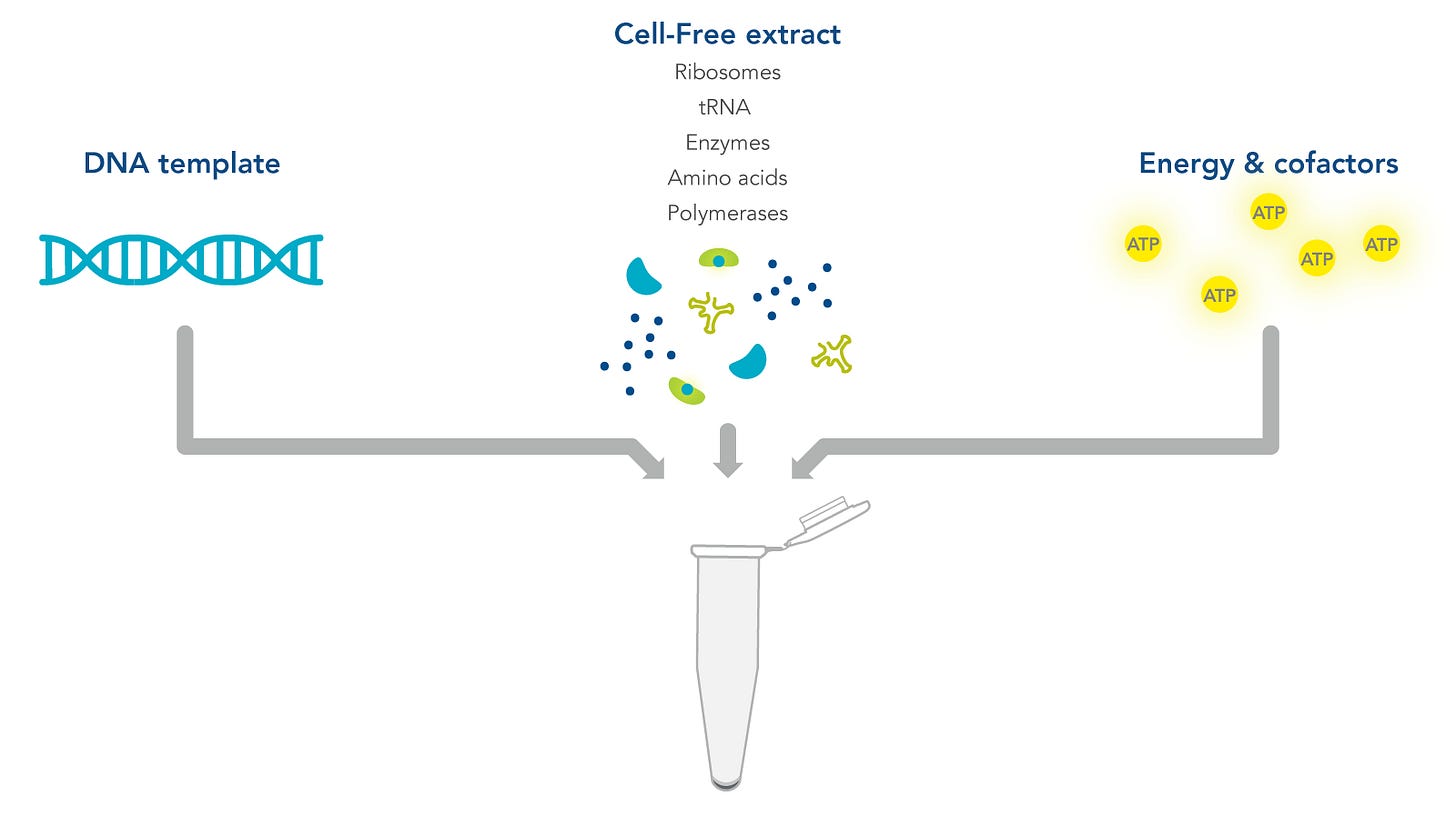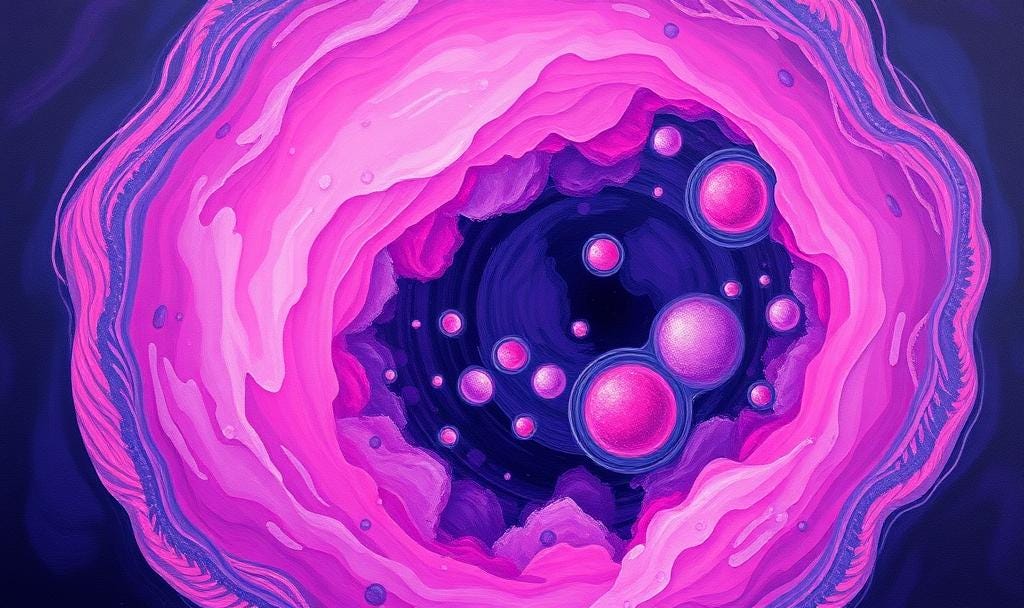Last updated: 18/09/2025
We have received a few lovely thank-you notes for our first post about working in the wet lab that we wrote. Here is part 2! This post is part of the Molecular Meditations 101 Series. You can read the others here.
P.S. If you are already familiar with the content in this article, a little too familiar, perhaps, and you are reading this while waiting for a reaction to run, then we suggest checking out our fun side notes!
6. Genetics
DNA is weird - humans have about 3 billion base pairs worth of DNA, enough to stretch out to 2 metres worth of it in the average human cell, but that’s nothing in the scale of things - lungfish have closer to 130 billion base pairs. While editing this article, the authors realised that their own facts were already outdated, and Lungfish are no longer the creatures with the largest known genome. In fact, it is a Japanese flower, called Paris japonica, that has 50 times more DNA than humans (approximately 149 billion base pairs). Most of that sequence encodes not for genes that form proteins. Still, for regulatory regions, repetitive elements, non-coding elements and a whole bunch more we don’t understand yet… and speaking of bunches… we share more than 50% of our genes with bananas!
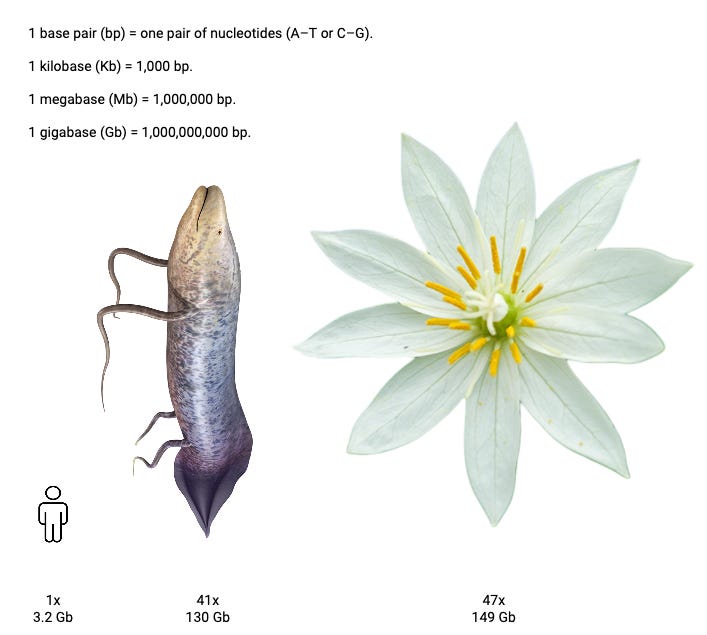
Genotyping (e.g. SNP arrays)
Identifying genetic variants in DNA. By aligning genetic sequences, the sites at which the sequences differ can be identified, for example, single-nucleotide polymorphisms (SNPs).
Used to study inherited traits or disease risk, for personalised medicine, in ancestry testing, or to screen model organisms or cell lines.
Learn more - SNP Genotyping intro
A sequencing technique that measures which genes are expressed in a sample or a single cell (transcribed), and at what levels.
Used to study differential gene expression, to compare healthy vs diseased or infected tissue.
Learn more - Intro video to RNA-seq method
Gene Knockout/Knockdown (KO/KD)
Removing or reducing the function of a gene. Cloning or CRISPR/Cas techniques can be used to delete genes or to introduce mutations which make the genes inactive/less active, in cell lines or in model organisms.
Used to study gene function, to model genetic diseases or to identify drug targets.
Learn more - Comparing KO/KD techniques
DNA Sequencing (Sanger Sequencing or Next Generation Sequencing - NGS)
Sanger is a cheap, classic DNA sequencing method. DNA is synthesised using a chain-termination method, creating lots of different-length DNA strands, gel electrophoresis to separate the strands, and the order of nucleotides is determined by identifying the last incorporated nucleotide.
Used to verify cloned or edited DNA sequences, to detect mutations or variants in small regions, or for targeted, low-throughput sequencing
Learn more - Explainer Video
NGS methods allow parallel sequencing of the DNA strands, and so can be much more high-throughput. There are a number of different methods used but Illumina sequencing is the most common.
Used to sequence whole genomes, transcriptomes, or targeted regions for research, diagnostics, and precision medicine.
Learn more - Illumina sequencing
Mendelian Crosses (in model organisms)
Planned breeding experiments for specific genes or traits. Involves crossing certain parental genotypes together and assessing the resulting genotype of the offspring.
Used to follow trait segregation (dominant, recessive, etc.), or to generate specific genotypes or mutants for model organisms.
Learn more - Explainer video
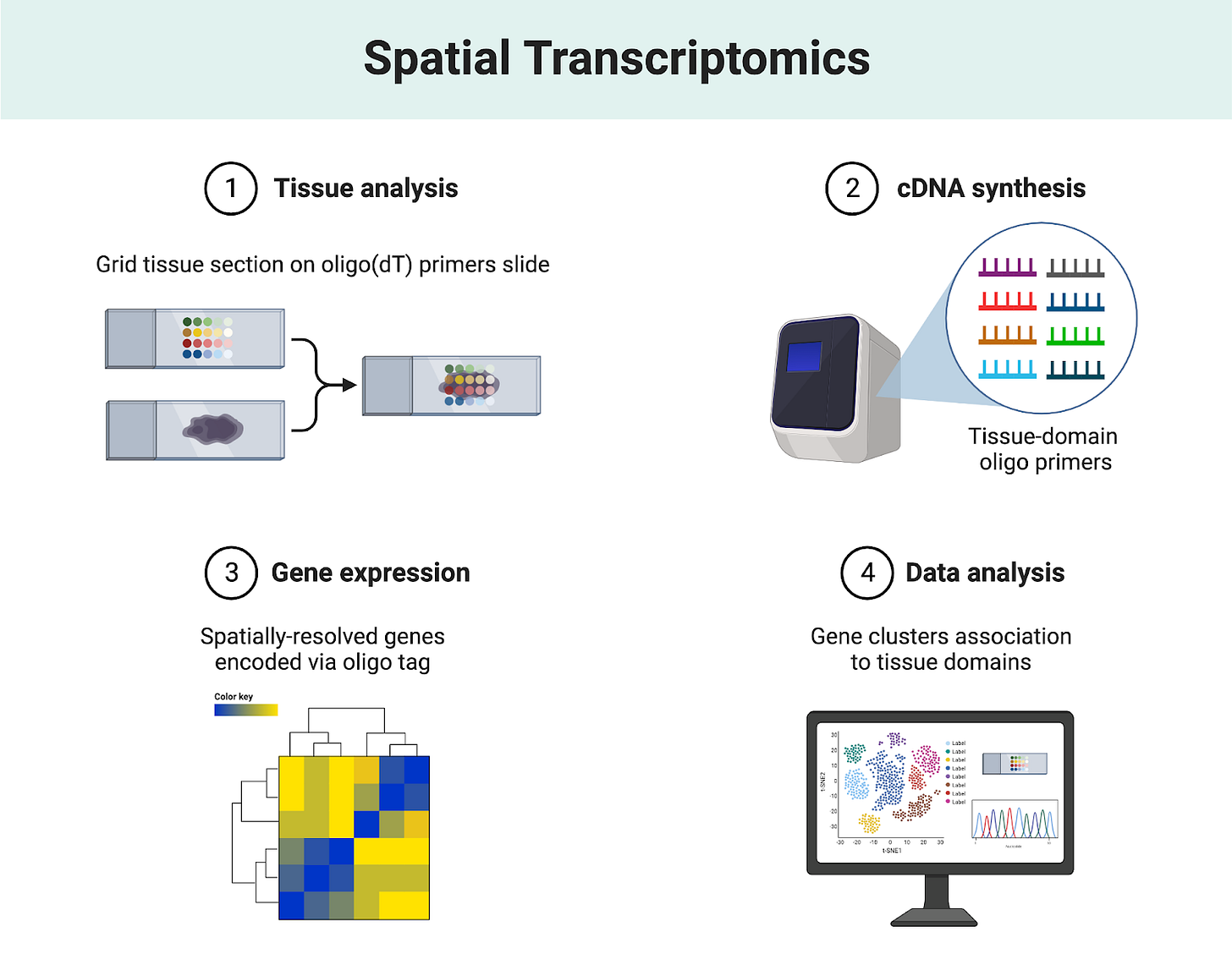
Fun Side Note - You might remember learning about Gregor Mendel in high school biology, but they probably didn’t teach you any of the interesting things about him!
7. Structural Biology
Structural biology is surprisingly beautiful - Some crystallised proteins actually look like tiny jewels under the microscope, and the 3D images of a solved structure are stunningly intricate! But proteins aren’t static, they wiggle, bend and ‘breathe’. By freezing molecules, blasting them with X-rays, or listening to their magnetic whispers, scientists can turn the invisible world of biology into detailed 3D maps - learn more about the technologies that allow us to visualise the proteins and enzymes that make life possible at the tiniest scales.
Check out these amazing artworks by David Goodsell and animations by Janet Iwasa, for example, showing the HIV lifecycle.
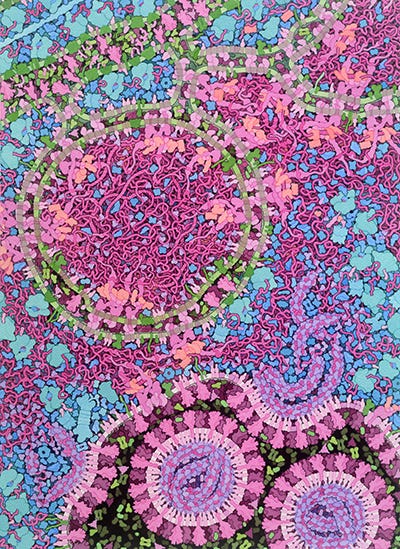
Determining the 3D atomic structure of crystallised proteins. X-rays are shone through a purified and crystallised protein, producing a diffraction pattern. This pattern is analysed to deduce the positions of atoms.
Used to understand the function, drug binding sites, or enzyme mechanisms of the protein.
Learn more - Protein Crystallography overview and detailed X-ray Diffraction explainer
Cryogenic Electron Microscopy (Cryo-EM)
Determining the 3D structure of proteins in a flash-frozen solution. Molecules are trapped in a layer of amorphous ice, and then 2D projection electron scatter images of many frozen molecules are used to infer the molecule’s 3D structure.
Used to study large protein complexes, viruses, and membrane proteins that are hard to crystallise.
Learn more - Explainer Video, or check out the CryoEM Academy channel to delve a little deeper.
Fun Side Note (coming soon) - there is a game in development where you play a cat inside an algae, check out the beautiful structural protein graphics!
Nuclear magnetic resonance (NMR) Spectroscopy
Determining the 3D structure of molecules in solution. Certain atomic nuclei (like hydrogen) respond to magnetic fields, emitting a signal from which researchers can collect a frequency spectrum and use this to determine the distance between atoms to solve the protein structure.
Used to study smaller proteins, RNA, or metabolites in their natural (non-crystalline) state.
Learn more - Basic explanation and NMR principles
Protein expression and purification
To produce a specific protein. The target protein is expressed in cells using specialised plasmids, and then separated from a complex mixture using its chemical properties and specific tags that can be attached to the protein.
Used to isolate pure proteins and to study protein-protein interactions.
Learn more - Explainer video
A computer-based method to predict and visualise 3D structure, interactions, and behaviour of molecules. Specialised software uses chemistry, physics, and structural biology principles to simulate molecular shapes, interactions, and movements.
Used to predict protein structure when experimental data is unavailable, for drug design, studying binding interactions and understanding how mutations might affect molecular structure or function.
Learn more - Simple explanation and work through an example for SARS-CoV-2 interactions
(Also, the AI tool Alphafold is getting really good now at solving protein structures!)
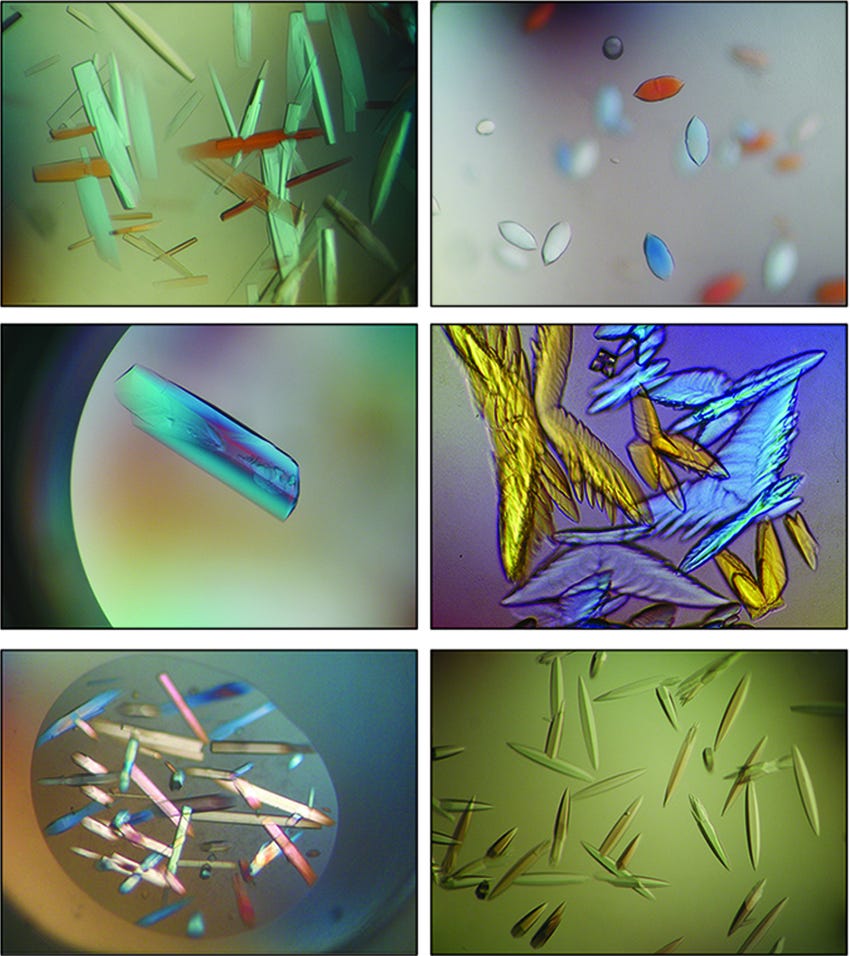
8. Pharmacology & Chemical Biology
Pharmacology and chemical biology techniques allow us to tinker with the chemistry of life by designing, testing, and decoding molecules that can change how cells behave. From screening millions of compounds with robots to synthesising brand-new molecules in the lab, these tools sit at the crossroads of biology and chemistry, where molecular science meets drug discovery.
Measures how a biological system responds to different concentrations of a drug. Cells, tissues, or organisms are exposed to increasing drug doses, and their responses are measured to generate a dose–response curve.
Used to determine a drug’s potency, efficacy, and optimal dosage range.
Learn more - Explainer Video
Automated testing of thousands to millions of compounds. Robotic systems deliver compounds into miniaturised assays, and automated readouts detect molecules with desired biological effects.
Used to rapidly identify “hits” for drug development or chemical biology research.
Learn more - Explainer Video
Measure how strongly and specifically a molecule (the ligand) binds to a target, such as a receptor or protein. A labelled ligand (often radioactive or fluorescent) is incubated with the target, and the amount of ligand that binds versus remains free is calculated.
Used to study receptor–ligand interactions, drug binding affinity, and receptor density.
Learn more - Explainer video for Radioligand assays
Reporter Gene Assays
A detectable “reporter” gene is linked to a gene of interest to monitor its activity. The reporter (e.g., luciferase or GFP) produces a measurable fluorescent signal when the target gene is activated.
Used to study gene regulation, signalling pathways, or the effect of drugs on gene expression.
Learn more - Explainer video
The chemical creation of low–molecular–weight compounds with specific structures. Chemists use stepwise chemical reactions to build molecules from simpler starting materials.
Used to produce potential drugs, chemical probes, or molecular tools for research.
Learn more - Small molecules as drugs or Deep dive into Organic Chemistry
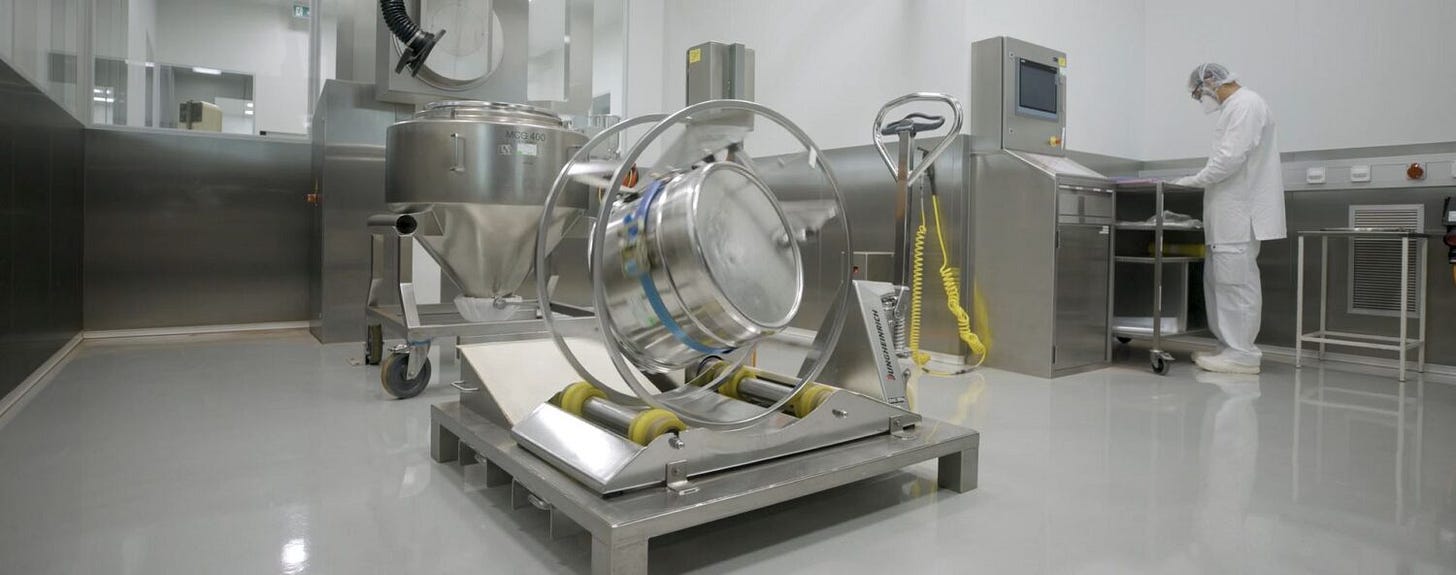
9. Cancer & Translational Biology
A lot of the time, biology is actually a lot like detective work - cancer and other diseases can leave us a lot of clues that can help us diagnose, treat or even prevent the condition to begin with. To study these clues, we can grow personalised 3D “mini-tumours” in a dish, we can give mice human cancer cells to see how they behave, or we can measure the tiniest molecular breadcrumbs to see if a person has a disease and to track if a therapy is working.
Organoid Culture
Growing miniaturised, 3D structures from stem cells that mimic the architecture and function of real organs or tumours. Stem cells or tumour cells are embedded in a gel-like matrix and given growth factors that drive self-organisation into 3D structures.
Used to study cancer development, test drugs, and model patient-specific disease.
Learn more - 3D Organoids
Fun Side Note - these can even be grown into ‘avatars’ - using tissue biopsied from a specific patient
Xenograft Models (e.g. mouse models)
Implanting human cells or tissues into animals. Human tumour cells are injected or grafted into immunodeficient mice, which are then used to study their behaviour in a living system. This helps to bridge the gap between cell culture studies and human clinical trials.
Used to monitor for disease progression and therapy effects, for example, to investigate tumour growth, metastasis, and treatment responses in vivo.
Learn more - Explainer video
Drug Sensitivity Assays (e.g. IC50)
Measure how much of a compound is needed to inhibit a biological process by 50 %. Cells or enzymes are exposed to a range of concentrations, and viability or activity is plotted to estimate IC₅₀. While dose–response experiments can cover stimulation or inhibition, drug-sensitivity assays focus on inhibitory potency, making results comparable across drugs or cell lines.
Used to quantify how effective a drug is at blocking cancer cell growth or activity.
Learn more - Explainer Video and explanation of how this relates to drug potency
Biomarker Analysis
Measuring molecules that indicate the presence, stage, or progression of disease. Samples like blood or tumour tissue are tested (e.g., with PCR, ELISA, or sequencing) for specific molecular signatures called biomarkers.
Used to diagnose cancer, predict treatment response, or monitor disease status.
Learn more - What are biomarkers
Preparing patient-derived samples for research or diagnostic testing. Samples are collected, preserved, and processed (e.g., fixing, freezing, extracting nucleic acids) under controlled conditions to maintain quality, with information stored in databases for further analysis and larger studies.
Used to ensure samples are suitable for downstream analysis such as histology, sequencing, or molecular assays and that data is accessible and sharable where needed.
Learn more - Follow a specimen from collection to pathology
Fun Side Note - the UK biobank stores around 17million patient samples - that’s a lot of clues frozen in time that scientists can go back to!
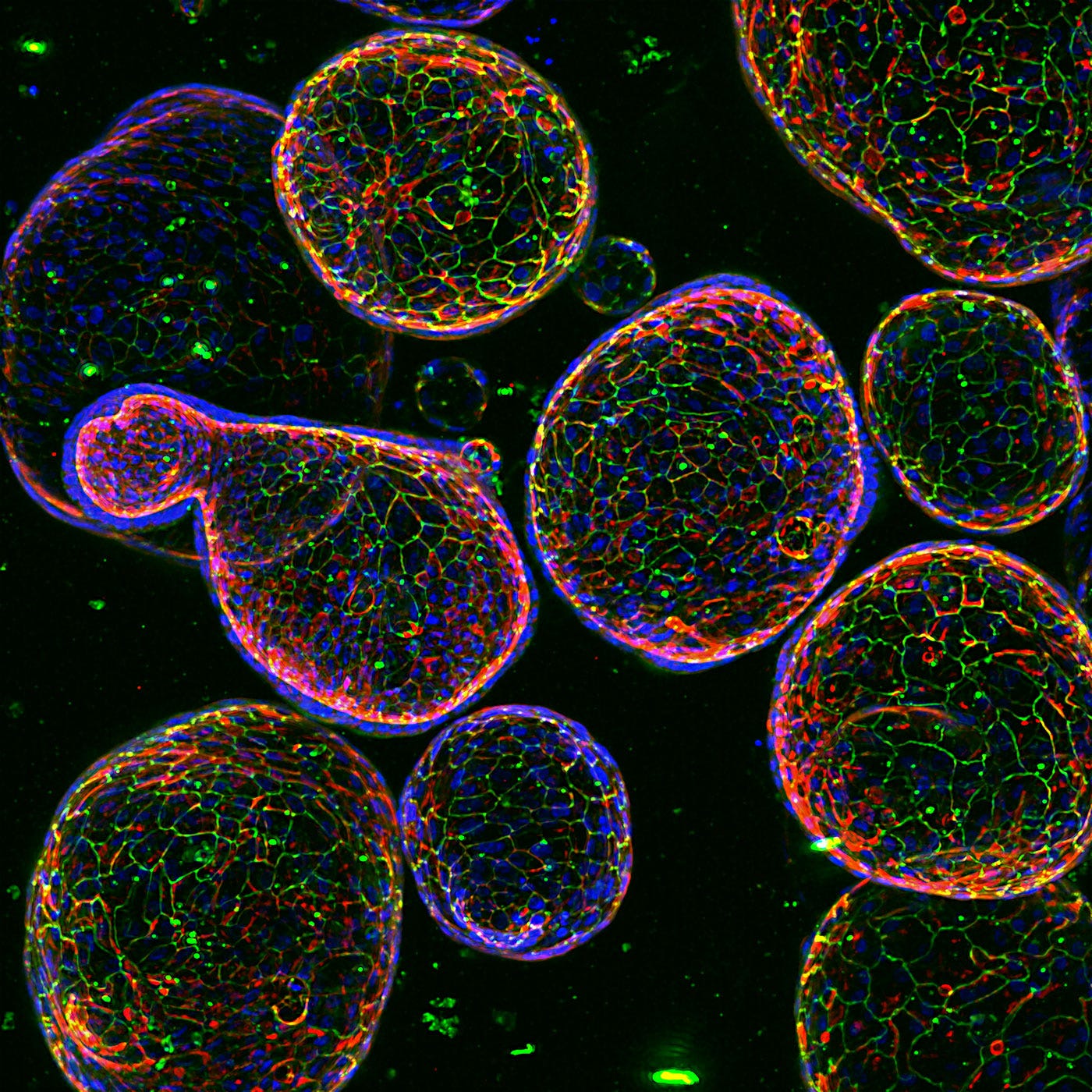
10. Synthetic Biology
Molecular biology doesn’t have to only be about “what does this gene do?” - it can also be about “what can we make it do?”. As well as deconstructing and observing life, scientists are re-wiring it, assembling DNA like Lego blocks, programming cells with genetic circuits, and even building protein factories in test tubes. From programming bacteria to digest oil spills to making heme for non-meat substitutes, synthetic biology is where engineering meets biology to create entirely new possibilities.
DNA Assembly (e.g. Gibson, Golden Gate)
Methods to join multiple DNA fragments into one continuous sequence. DNA fragments with overlapping ends are enzymatically joined in a single reaction (Gibson assembly) or cut and ligated using specific enzymes and recognition sites (Golden Gate assembly).
Used to build custom genetic constructs like plasmids or synthetic pathways, or recombinant clones of viruses.
Learn more - Cloning overview, Gibson technique and Golden Gate Technique
Engineering plasmid DNA to contain genetic “circuits” that control cellular behaviour. Genes, promoters, and regulatory elements are arranged in plasmids to create desired gene expression patterns.
Used to program cells to perform logic functions, to produce proteins, or to sense environmental signals.
Learn more - Explainer Video and Asimov Press Article about building the first Gene circuit
Transformation into Host Cells
Introducing foreign DNA (e.g., plasmids) into living cells. Cells are treated chemically or electrically, which encourages them to take up DNA from their environment.
Used to make cells express new genes for research or production, or to grow plasmids for protein production or to construct recombinant clones.
Learn more - Explainer video
Biosensor Development
Creating biological systems that detect specific molecules and produce a measurable signal. Cells or devices are engineered so that detection of a target triggers a reporter signal like fluorescence or colour change.
Used to monitor toxins, metabolites, or environmental conditions.
Learn more - Intro video and explainer for electrochemical biosensors
Cell-Free Protein Expression Systems
Producing proteins in a test tube without living cells. Cellular machinery (ribosomes, enzymes) extracted from cells is mixed with DNA templates to synthesise proteins in vitro.
Used to quickly test genetic constructs or make proteins without cell culture.
Learn more - Explainer Video



